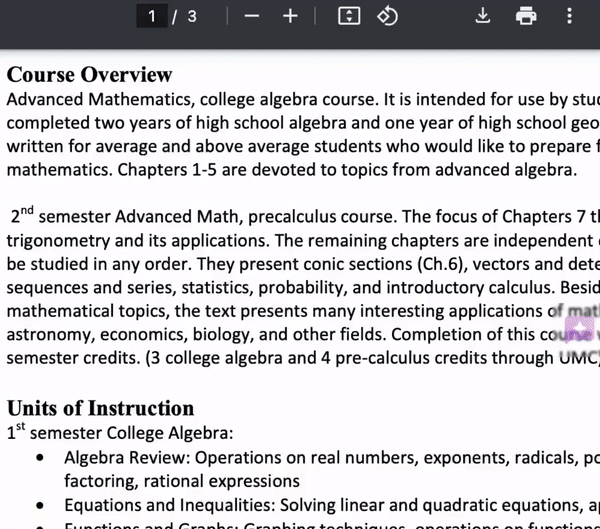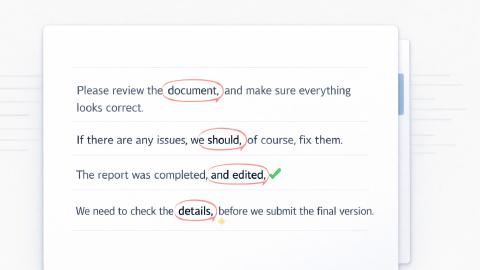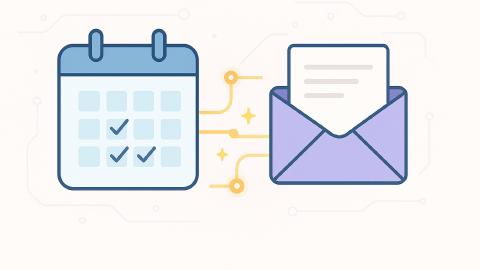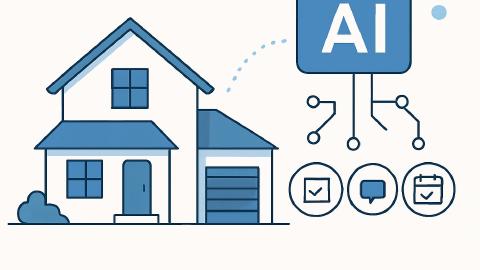5 Tips on How to Create a Lesson Plan + Templates
Use these tips and templates to create effective lesson plans for your class.
Creating a lesson plan might seem daunting, but it doesn’t have to be. A well-structured plan not only makes teaching smoother but also ensures your students get the most out of each lesson.
Without a clear plan, lessons can become disorganized, making it harder to keep students engaged and on track.
Learning how to create effective lesson plans can solve this problem by streamlining your preparation process and ensuring every lesson has a clear purpose.
Whether you’re a new teacher or looking to refine your skills, this guide will provide clear steps and practical tips. Plus, you’ll find examples and templates to make the process even easier. Let’s dive into the essentials of lesson planning.
What Exactly is a Lesson Plan?
A lesson plan is a detailed guide that outlines what and how a teacher will teach during a specific period. It includes objectives, materials, activities, and assessments designed to achieve specific learning outcomes.
A lesson plan serves as a roadmap for the teacher, ensuring that lessons are structured and time is used effectively.
By having a clear plan, teachers can stay organized and focus on student engagement rather than last-minute preparations. A lesson plan also helps in addressing diverse learning needs, ensuring that every student benefits from the lesson.
Why are Lesson Plans Important in Teaching Strategy?
Lesson plans are vital in creating a structured and goal-oriented teaching approach. They help teachers align their activities with curriculum standards and learning objectives.
Moreover, it allows teachers to anticipate potential challenges and prepare solutions in advance. Lesson plans also make it easier to evaluate the effectiveness of teaching methods and student progress.
For example, if you are creating a 5e model lesson plan, you'll want to ensure you structure your instruction around the five key phases: Engage, Explore, Explain, Elaborate, and Evaluate.
Use AI Blaze to generate lesson plans & save time.
Benefits of Utilizing Lesson Plans
Lesson plans provide numerous advantages for both teachers and students. They create structure and clarity, making it easier to deliver effective lessons and track progress.
Here are some key benefits:
Improves time management - Reduces the need for last-minute preparations by providing a clear roadmap.
Enhances lesson quality - Ensures lessons are organized, engaging, and aligned with learning goals.
Supports student learning - Helps address gaps in understanding with planned activities and assessments.
Encourages consistency - Maintains a logical sequence of topics for long-term learning objectives.
Reduces stress for teachers - Simplifies preparation, allowing more focus on teaching and interaction.
By utilizing lesson plans, teachers can better manage their time and resources. This leads to a more efficient teaching process and improved student outcomes.
What Goes Into a Lesson Plan?
A lesson plan includes key elements that ensure lessons are organized and effective. These components guide the teaching process and help achieve specific learning objectives.
Here’s what typically goes into a lesson plan:
Objective - A clear statement of what students should learn by the end of the lesson.
Materials - A list of resources and tools needed, such as textbooks, handouts, or technology.
Procedure - Step-by-step instructions for teaching, including warm-ups, activities, and wrap-ups.
Assessment - Methods to measure whether students have met the learning objective, such as quizzes or group discussions.
Differentiation strategies - Adjustments to address the needs of diverse learners.
Timing - Estimated time allocations for each part of the lesson.
Potential challenges - Anticipated issues with solutions to address them.
Including these elements ensures that your lesson plan is comprehensive, practical, and easy to implement.
How to Create a Lesson Plan
Lesson plans are powerful tools to boost student learning by providing structure and focus. Each step in the planning process ensures that your lessons are engaging, purposeful, and impactful.
Here's how to create a lesson plan:
Start with a Clear Objective
Define exactly what you want students to learn by the end of the lesson. Clear objectives help you align activities with learning goals and ensure students know what they are working toward.
Focus on measurable outcomes that directly improve student understanding and skills.
Identify Necessary Materials
Gather the tools and resources needed to support student learning. This might include interactive handouts, videos, or digital tools to make lessons more engaging.
Having materials ready ensures students can dive into activities without delays or distractions.
Outline a Step-by-Step Procedure
Plan how you will guide students through the lesson to maximize their learning. Start with an introduction that connects the lesson to prior knowledge, use activities to deepen understanding, and end with a summary to reinforce key points.
Ensure every step keeps students actively involved in their learning journey.
Plan Assessments to Measure Learning
Choose assessments that give meaningful insights into student progress. Use tools like group discussions, projects, or quick quizzes to check for understanding and adjust your teaching as needed.
These assessments help you ensure students are meeting learning objectives effectively.
Review and Adjust Your Plan
Reflect on whether your plan fully supports student learning. Are the objectives realistic? Do the activities engage students and help them master the material?
Adjustments ensure your plan is tailored to meet the specific needs of your students, boosting their success.
Use AI Blaze to generate lesson plans & save time.
How to Write an Objective for a Lesson Plan
A clear objective defines what students should achieve by the end of the lesson. It ensures the lesson is focused and provides a measurable outcome to evaluate success.
Use action verbs like "identify," "explain," or "solve" to make objectives specific and measurable. Keep the objective student-centered by focusing on what they will do or learn.
Example: Instead of saying, "Students will understand fractions," write, "Students will be able to solve basic fraction problems involving addition and subtraction."
How to Write Standards in a Lesson Plan
Standards ensure your lesson aligns with curriculum requirements and broader educational goals. Including standards in your plan helps demonstrate how your teaching meets those expectations.
Match your lesson objectives and activities to specific state or national standards for your subject. Write the standard in student-friendly language to make it easier for everyone to understand its purpose.
Example: A standard like "CCSS.MATH.CONTENT.4.NF.B.3" can be included as "Students will apply their understanding of fractions to solve real-world problems, including adding and subtracting fractions with like denominators."
How to Generate Lesson Plans With AI

If you need help creating lesson plans, use AI Blaze to generate lesson plans with class & standard specific content and boost student learning.
AI Blaze is the ultimate AI assistant that helps you quickly generate lesson plans, generate text, grade essays, provide feedback, and much more!
Simply open your syllabus, ask AI Blaze to generate the lesson plan, and AI Blaze will create it based on your standards, assignments, and timelines.
Features
Generate lesson plans with AI - Generate high quality lesson plans for any class using AI.
Grade & check essays & assignments - Use AI to provide feedback and grade/check essays, papers, and assignments.
Instantly use GPT-4 on any site with keyboard shortcuts and a dynamic AI sidebar assistant!
AI Blaze is free! - Forget about annoying licenses or subscriptions.
Use AI Blaze to generate lesson plans & save time.
Lesson Plan Examples & Templates
Examples and templates help streamline lesson planning by offering pre-structured formats that include key components.
Below are three detailed, real-world examples that you can adapt to your classroom needs.
1. Elementary Math Lesson Plan: Teaching Fractions
Objective: Students will be able to add and subtract fractions with like denominators.
Materials: Fraction manipulatives, worksheets, whiteboard, markers.
Procedure:
- Warm-up (5 minutes): Review previous concepts using a quick quiz on fractions.
- Instruction (10 minutes): Use manipulatives to visually demonstrate adding and subtracting fractions.
- Guided Practice (15 minutes): Students solve example problems in pairs with teacher assistance.
- Independent Practice (10 minutes): Students complete a worksheet on fractions.
Assessment: Collect and review worksheets to ensure understanding.
Differentiation: Provide additional visual aids for students needing extra support.
2. Middle School Science Lesson Plan: Exploring Ecosystems
Objective: Students will describe the roles of producers, consumers, and decomposers in an ecosystem.
Materials: Poster paper, markers, printed ecosystem images, role cards.
Procedure:
- Warm-up (5 minutes): Show images of different ecosystems and ask students to identify visible elements.
- Instruction (15 minutes): Explain ecosystem roles with real-world examples.
- Activity (20 minutes): In groups, students create food chain posters using role cards and draw connections between producers, consumers, and decomposers.
- Discussion (10 minutes): Groups present their posters to the class.
Assessment: Use a rubric to evaluate poster accuracy and presentations.
Differentiation: Assign simpler roles to students who need additional guidance.
3. High School English Lesson Plan: Analyzing Short Stories
Objective: Students will identify themes and use textual evidence to support their analysis of a short story.
Materials: Copies of a short story, highlighters, graphic organizers.
Procedure:
- Warm-up (5 minutes): Quick discussion on what makes a good story theme.
- Instruction (10 minutes): Teacher models identifying a theme in a paragraph and finding supporting evidence.
- Guided Practice (20 minutes): Students work in groups to analyze assigned sections of the story, filling out the graphic organizer.
- Independent Practice (15 minutes): Students write a paragraph analyzing one theme from the story with evidence.
Assessment: Collect paragraphs and provide feedback on textual evidence and clarity.
Differentiation: Provide sentence starters for students who struggle with writing.
These templates provide structure while leaving room for customization, ensuring that you can adapt them to meet the specific needs of your students.
Use AI to Generate Lesson Plans With Ease
Lesson planning is an essential skill for effective teaching. By including clear objectives, aligning with standards, and utilizing tools like AI, teachers can save time and improve lesson quality.
Whether you’re a seasoned educator or just starting, these tips and templates will help you create impactful lessons that support student success.
Use AI Blaze to create lesson plans using AI for free!




